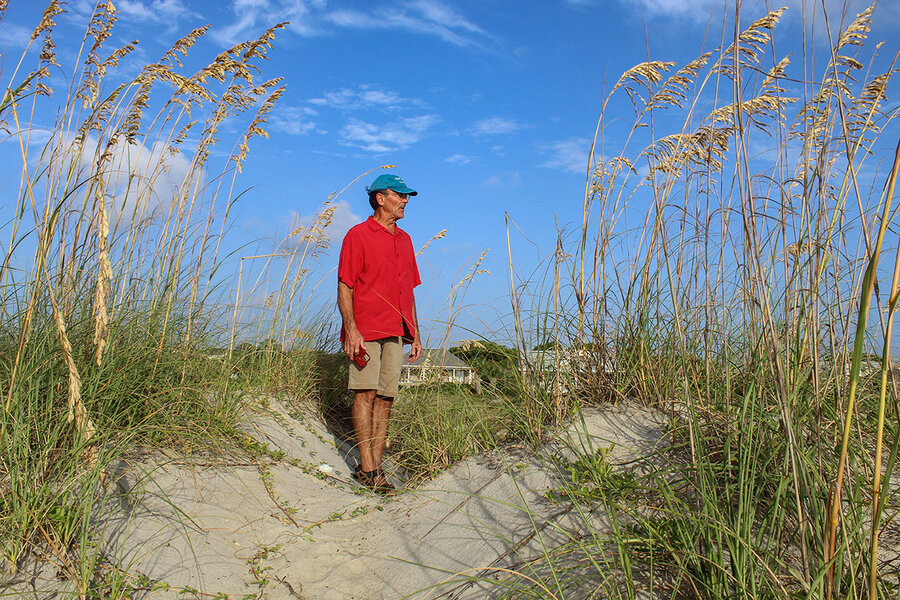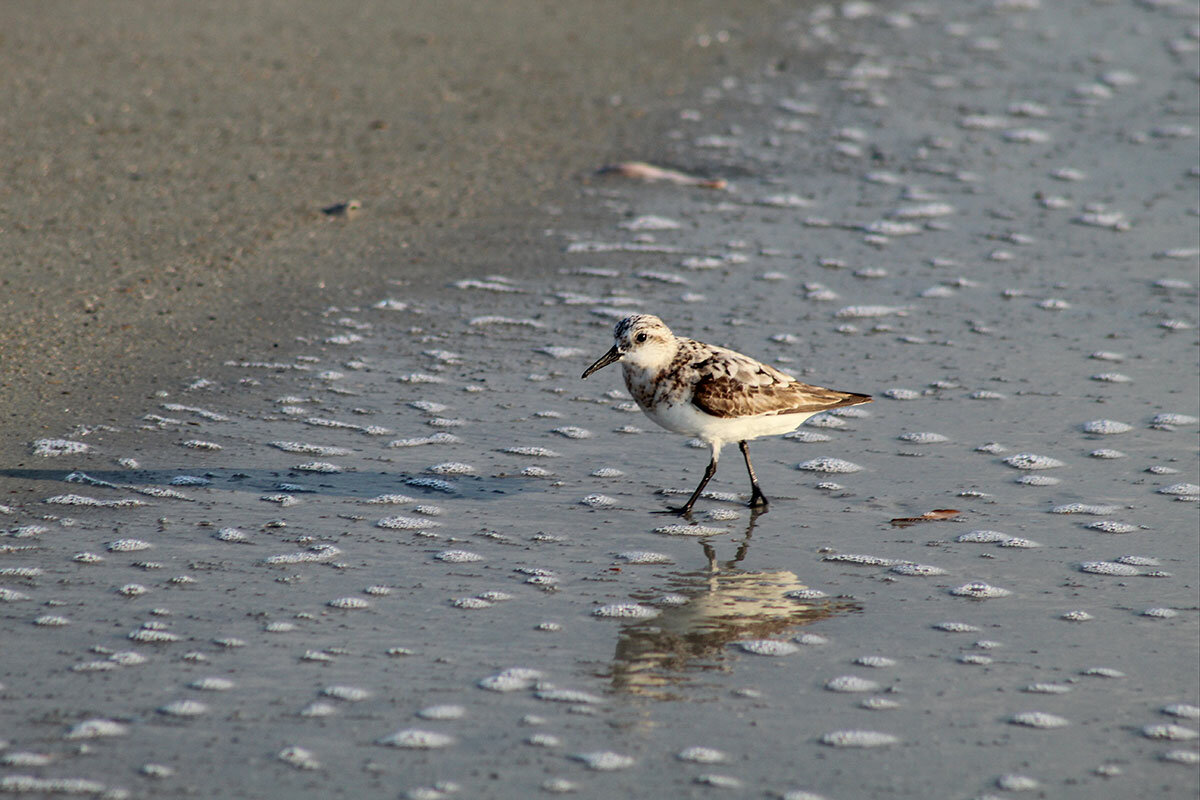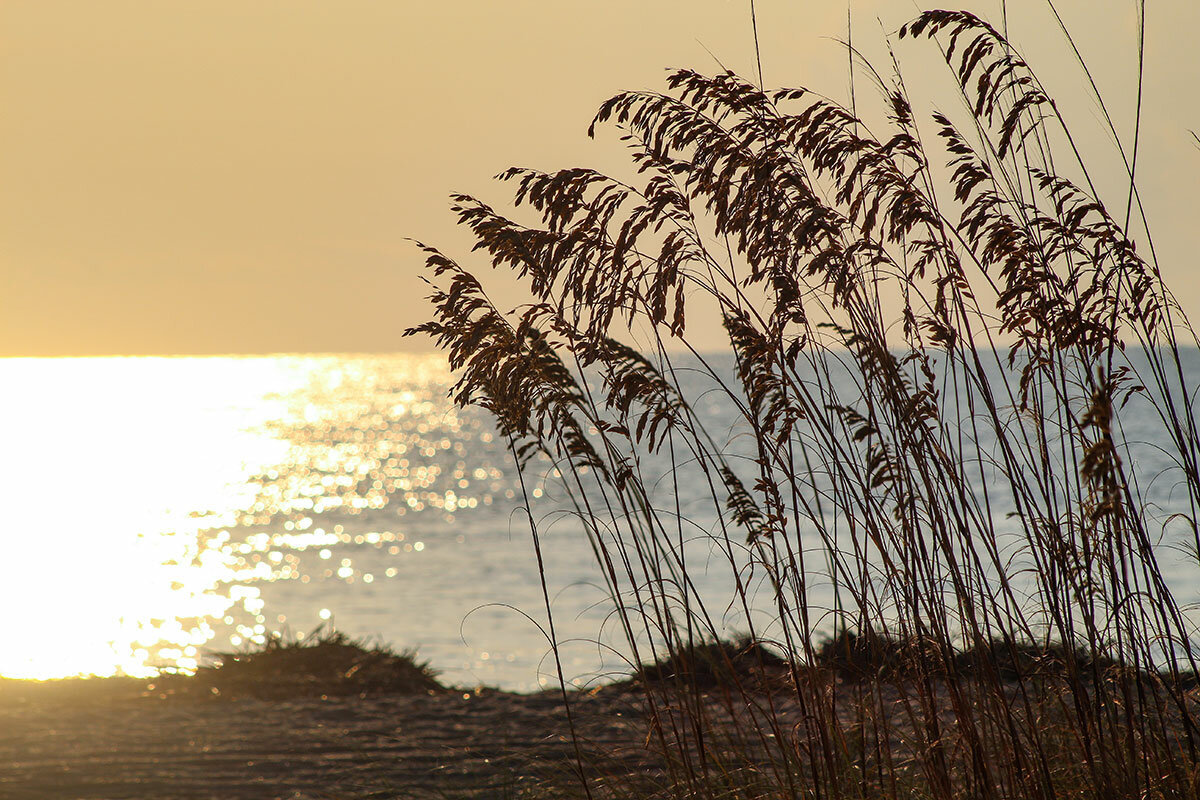Beyond sand castles: Sculptors create dunes to save America’s shoreline
Loading...
| TYBEE ISLAND, GA.
A ghost crab skitters into the cordgrass. Sea oats bow to a southerly breeze. A kestrel swoops hard on a hunt for beach mice.
Alan Robertson takes stock of a scene that is in some ways more movie set than nature’s handiwork.
Clad in the coastal fashion – red fisherman’s shirt, khaki shorts, and flip-flops – the architect of the island’s defenses peers at his creation: an award-winning network of dunes, wind fences, and walkovers, overclad with native plants, some washed in on wrack.
Why We Wrote This
A story focused onCan a sand sculpture save a beach? As coastal communities confront shoreline erosion, building new dunes is one option in a dawning era of constant adaptation.
In reality he is standing on a fully engineered coastal resilience project replete with tide gates, water boulevards, and dunes. Unlike a levee, this $15 million, 1.3 million cubic yard project, completed in 2019, is designed not to resist nature but to absorb it.
“If you didn’t know it was not nature, well, you wouldn’t know [it was built by bulldozer],” says Mr. Robertson, a global banker turned dune builder.
At its heart, so-called beach renourishment is a herculean form of sandcastle building. It is expensive, and critics say it may be futile. Yet with America’s coastal defenses buckling, and 100 million Americans living in coastal counties, projects like this one are emerging as an important piece of larger efforts to adapt to rising seas and greater flood risks.
These battles may at times merely postpone poignant decisions to stop fighting and retreat. But some experts say the efforts with pumps and dump trucks, dredges and pipe, represent an inevitable balancing act between changing coastlines and the humans who live there.
“Clearly we are creating conflict every time we put a new house or a new road right on the coast,” says Jens Figlus, a coastal engineer at Texas A&M University’s Galveston Island campus. “But at the same time, to move forward and to keep economies going ... we can’t remove ourselves from the coast. So we have to figure out ways to live with it so that we are doing this with nature, not against it. [But] it requires money and political will, which is difficult.”
One problem is that hard data is difficult to glean and compile, amid the unknowables of climate change and sea level rise. That, says Mr. Figlus, is why many engineers – and community leaders – still prefer “gray” infrastructure: bulwarks like sea walls and groins that are permanent one-time investments.
Projects like the one on Tybee Island take a very different tack.
“We are trying to understand how nature is moving things around so we can capitalize on those natural processes,” says Mr. Figlus, one of the nation’s foremost dune engineers.
Gray infrastructure like levees fail catastrophically when they do fail. By mimicking nature, Mr. Robertson says, the Tybee dune project “is designed to fail gracefully.”
His leadership here on Tybee has earned plaudits. Sen. Sheldon Whitehouse, the Rhode Island Democrat, mentions Tybee Island’s comprehensive flood management plan as a model. Republican Rep. Buddy Carter of Georgia, who grew up fishing on the state’s coast, is a fan.
“Tybee is six or seven years ahead of the country, in my opinion,” when it comes to resilience work, says Clark Alexander, director of the Skidaway Institute of Oceanography in Savannah, Georgia.
The National Oceanic and Atmospheric Administration has asked Mr. Robertson to write a book of best practices to help other communities create and execute resilience plans.
Mr. Robertson admits he is neither artist nor engineer, but a project manager on a mission. “My best skill is I know how to hold people accountable,” he says.
Sand isn’t cheap
A century since the United States first began bolstering its beachheads with fresh sand, the cubic yards involved have been growing exponentially by the decade.
The nation has now dumped and pumped some 1.6 billion cubic yards of sand. At anywhere from $14 to $28 per cubic yard, it is not likely to get any cheaper, experts predict.
At a recent symposium in Georgia, an Army Corps of Engineers officer noted that “sand will soon be as valuable as water.”
The Army Corps now requires communities to pay a larger share of projects it gets involved in, because there are ever-growing demands on a fixed sand-moving budget.
Flood risks and costs have always been present, of course. But Hurricane Ida joined a long list of increasingly powerful and rain-soaked storms that lumber into some of the most expensive real estate in the world, pummeling refineries, fishing villages, and tony communities alike.
“There are a lot of forces at work,” including sea level rise, population growth, and shifts in funding for resilience projects, says Todd Miller, founder of the North Carolina Coastal Federation in Newport. “That’s part of the reason [the growth in beach renourishment] seems so rapid: There are needs everywhere now.”
Using everything from oyster castles to water boulevards, morning glory vines to dune fences, the push is on to create living coastlines, engineered to channel nature’s powers rather than hold them at bay.
It is not a theoretical exercise. Much of the Texas coast, for example, is losing 6 feet of beach – every year.
Juggling costs in one North Carolina town
“It’s ultimately a race against the climate,” says Mr. Miller, at the North Carolina Coastal Federation. “And there will be a tipping point where that shift is going to exceed the capacity of communities to keep up with it financially and physically.”
Ken Thomas says he can feel that moment coming.
As the mayor of Oak Island, North Carolina, he along with the city council has struggled to bolster parts of a 9-mile-long beach. This year, a project had to be shut down before it was finished. Funding is difficult. The city intended to assess homeowners on a scale depending on how much the dune project would affect them. But the council this summer scrapped that plan amid an uproar over equity.
Competition for engineers and dredges, Mr. Thomas says, is fierce and getting fiercer as needs shift elsewhere – particularly Gulf of Mexico communities that have borne the brunt of recent storms.
Several North Carolina beach communities found themselves excised from an Army Corps list of projects in February. And on the rapidly eroding Outer Banks, there is very little available sand to dredge.
“There ain’t no easy answers,” says Mayor Thomas. “If we do nothing, it isn’t that long before the houses fall into the ocean, and then the tourism stops. But you’ve still got to maintain water and sewer and police and the fire department. Taxes will go through the roof.”
Rocks or sand? Depends on the place.
The dynamics differ by community based on the mix of tourists versus locals, the relative wealth of the region, the availability of sand – and the political savvy to get attention in Washington.
Sea Island in Georgia, a retreat for wealthy retirees, privately funds its renourishment projects. Tybee Island has gone all-in on pumping sand. In a bid to not be a tourism outpost like Tybee, St. Simons Island to the south has long resisted beach renourishment, choosing instead to place rocks on the beach to block erosion.
“It’s not really about tourism in these communities, but about the homeowners,” says Megan Desrosiers, executive director of One Hundred Miles, a conservation group in Brunswick, Georgia. “A lot of beachfront homeowners are pretty wealthy people, and so the question that each community has to ask is, what is the benefit to everybody of spending these resources ... to stabilize the island?”
The natural processes are visible in real time, with 250,000-year-old Tybee Island slowly rotating on an axis. Georgia’s newest island – Pelican Island – appeared just south of Tybee only a decade ago. As morning glories and sea oats take root, dunes grow noticeably season to season.
Mr. Robertson grew up in coastal Maryland and swam in the world’s oceans as a global-trotting banker from Chicago. Looking for something to do in retirement after buying a house here, he joined the Tybee Island Beach Task Force. As he began to immerse himself in the politics of sand, “I suddenly entered ‘the Matrix,’” he says. “Now I can’t look at this without seeing all the processes at work.”
One of his most important current projects is to survey people who live far inland, to better understand how those who don’t live on the coast calculate the value of preserving it. That survey, he says, is likely to drive funding and design decisions.
“There are so many competing factions,” says Mr. Robertson. “Some people believe it is a waste of money. But we believe it’s worth it.”









